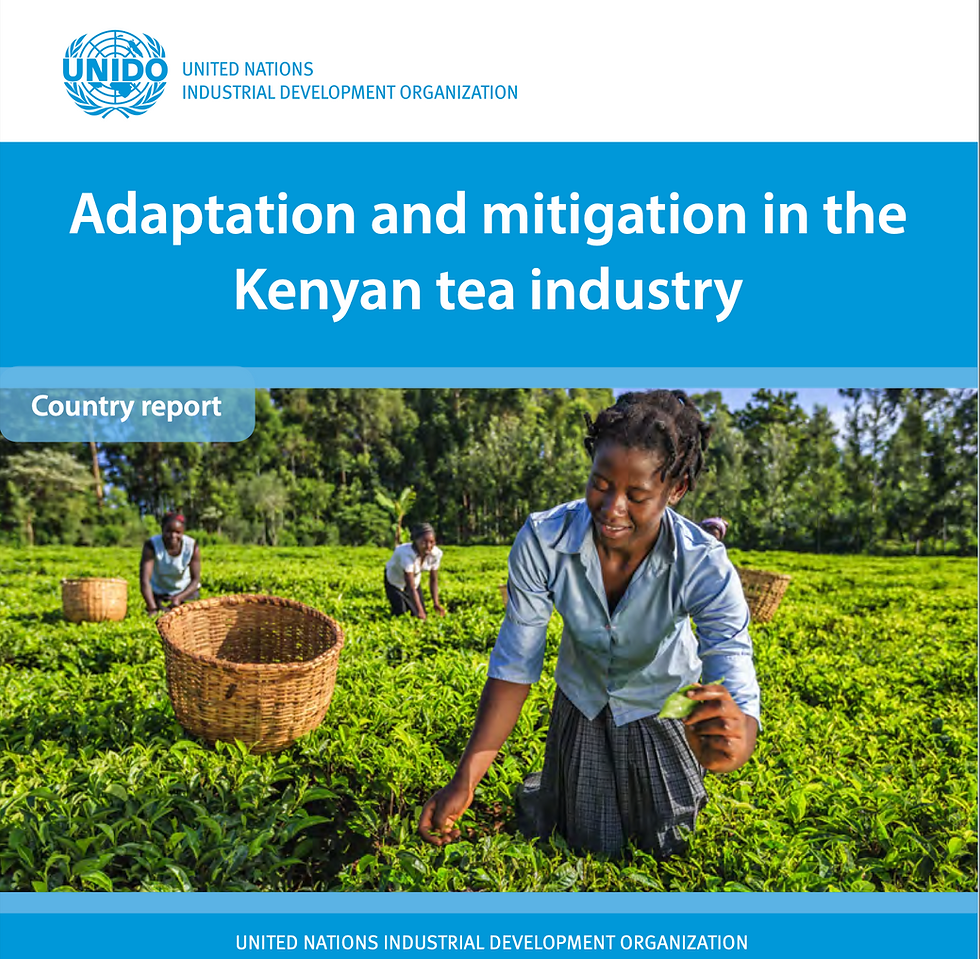
We are in the coffee business in Indonesia, but tea is also a significant industry known by Java tea. And the whole industry consumes 72.6 Giga Wh of electricity per year. I recently used the climate change projections for Java, a thriving tea industry, in my blog post on climate change projections, so I'll try to show how this relates to industry and energy issues.
Indonesia's tea industry faces high production costs, poor infrastructure, low levels of value addition and product diversification, inadequate research, development and expansion, and falling global tea prices. Unfortunately, Indonesia's international competitiveness in the tea industry is gradually declining; Indonesia's tea export in 2013-2016 is trending down by 10.05% per year. While coffee uses energy for roasting, the tea industry uses fuel for drying. In Indonesia, the wilting and drying process of tea leaves has become longer due to the ageing of plant and equipment, which has increased the energy consumption and carbon footprint of the tea industry. As mentioned in a recent blog, the RCP8.5/CMIP5 climate change projections predict an increase of 20 to 40 MM in precipitation over the three months of the rainy season in Java.
Higher humidity due to climate change will further increase the cost of the wilting and drying process. Therefore, there is a need to introduce new energy-saving and low-carbon technologies to the Indonesian tea industry. Therefore, by installing more efficient wilting and drying systems and reducing energy consumption, we can contribute to Indonesia's energy and climate change efforts by improving tea productivity and reducing carbon emissions. The UNIDO project in Kenya, which solved this problem by installing efficient drying equipment in the tea industry, can be replicated in Indonesia.
Even though parts of Indonesia are rapidly modernising, there are still problems with industrial equipment and infrastructure improvements, including transport and energy. Furthermore, there is no regulation on speed control and fixed speed/output air volume for the wilting and drying tea leaves about the tea industry. Due to these problems, it is believed that the equipment has not been updated. Therefore, I suggest installing new energy-saving and low carbon blower technologies that improve the wilting and drying process by adjusting the airflow according to the tea leaves' condition. The energy-intensive processes in tea production plants comprise the wilting, drying and rubbing (crush tear and curl CTC) processes, with wilting consuming almost 56% of the total energy consumption. Since the processing, wilting and drying processes are sensitive to temperature and moisture fluctuations, the increase in humidity from the increase in rainfall of up to 40% during the rainy season due to climate change may also increase the energy required for the wilting process. Therefore, providing technical solutions that provide power saving for tea factories will contribute to reducing energy consumption.
For example, the Malabar tea factory in West Java burns IDO (industrial diesel oil) to process tea. A large amount of energy is required in the drying process, where Malabar's IDO consumption is 0.35 litres per kilo of dried tea per year, with 0.24 litres required for the drying process and 0.11 litres for the wilting process. The estimated IDO requirement of Malabar tea factory is about 1.27 million litres per annum, and the total heat requirement for wilting and drying process is at least 6.10 MWt. The use of efficient blowers and systems will reduce these energy consumptions.
The energy requirements include improved blowers, highly energy-efficient motors and inverters (variable speed drives). The improvements will result in shorter operating times, significantly reduced electricity consumption and lower carbon emissions. The efficient fans and electronic controls, which we also used in Kenya, were able to apply the right amount of air to wilt for the climatic conditions, saving over 60% of energy and reducing production costs. The total annual electricity consumption of the tea industry in Indonesia in 2019 is about 72.7 Giga Wh. If wilting, which consumes 56% of the total energy, can be made 60% more efficient, the industry will save 24.4 Giga kWh of energy. Indonesia is the only country where electricity generation from coal is still rising, with 154,9 Tera wh of electricity from coal-based thermal power plants in 2018.
Therefore, if this mechanism is widely spread in the tea industry, it is expected to reduce electricity generation from coal. As climate change may increase the tea industry's amount of energy, it is good to consider this kind of improvement now.

Comments